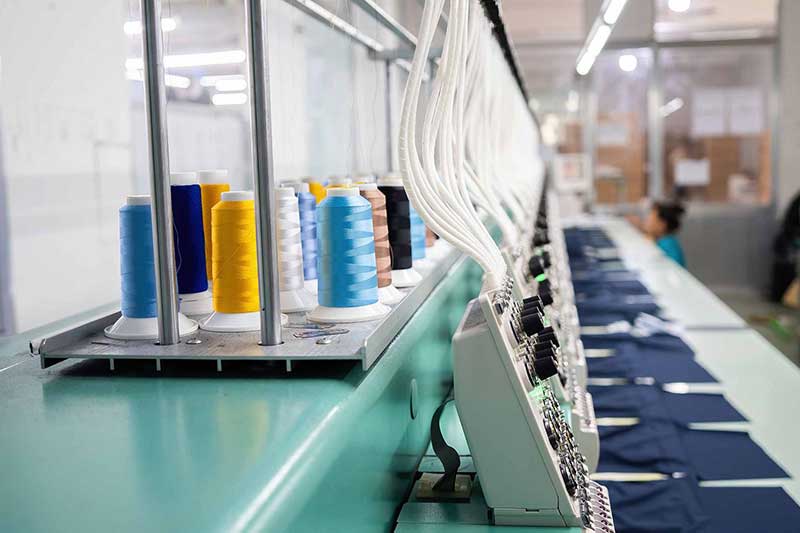Smart Factories: How Automation & Software Are Transforming Textile Manufacturing

Smart Factories are no longer a futuristic concept; they are rapidly becoming the foundation of modern textile manufacturing. By integrating automation, robotics, and intelligent software, the industry is redefining efficiency, sustainability, and innovation. What was once one of the most labor-intensive sectors is now reshaping itself into a high-tech ecosystem capable of meeting global demand with speed, precision, and flexibility.
From Tradition to Transformation
Textiles have always celebrated craftsmanship, but growing global demand requires more than tradition alone. Today’s Smart Factories bridge heritage and innovation, allowing manufacturers to preserve quality while optimizing output. Automated machinery now manages repetitive and complex processes, while advanced software equips decision-makers with the insights to respond to shifting market conditions in real time. For exhibitors showcasing solutions, this transformation is a chance to demonstrate how cutting-edge technologies integrate seamlessly with legacy systems, ensuring a balance of reliability and reinvention.
Automation Driving Efficiency at Scale
Processes such as cutting, dyeing, weaving, and finishing once heavily dependent on manual labor are now executed with greater consistency and fewer errors by intelligent machines. Automation reduces downtime, enables 24/7 operations, and ensures faster response to changing consumer demands. In this new era, efficiency is not defined only by speed but also by precision and resource optimization. Exhibitors offering robotic systems and automated workflows are helping manufacturers scale with confidence while ensuring consistent quality.
Software: The Nervous System of Modern Factories
If automation is the muscle, software is the brain of the Smart Factory. Integrated platforms now connect production data, supply chain logistics, and customer demand into unified dashboards. Manufacturers benefit from predictive maintenance, real-time tracking of raw materials, and complete transparency into order progress. These capabilities are shaping the way textile leaders plan, allocate, and deliver. Exhibitors specializing in manufacturing software are showcasing how data-driven systems give companies the visibility and control they need to remain competitive in global markets.
Sustainability as a Competitive Advantage
The textile industry has long faced scrutiny over water usage, chemical waste, and high energy consumption. Smart Factories present practical solutions. Automated dyeing systems use significantly less water and chemicals, while AI-powered quality checks reduce defective output and unnecessary waste. Energy-efficient machinery combined with intelligent monitoring helps reduce the environmental footprint without sacrificing production goals. For exhibitors focusing on sustainability-driven innovations, this is an opportunity to show how technology can simultaneously advance profitability and environmental responsibility.
Customization and Agility
Consumer expectations are shifting toward personalization. Traditional textile factories struggled with small-batch orders, but Smart Factories make mass customization possible. Digital design tools coupled with automated production enable short runs, quick turnarounds, and seamless transitions between product lines. This ability to respond swiftly to trends is what sets modern manufacturers apart. Exhibitors introducing design-to-production workflows are helping brands shorten lead times while keeping pace with consumer demand.
A Shifting Workforce
The rise of Smart Factories is also reshaping labor dynamics. While automation replaces repetitive manual roles, demand for new skills in programming, software management, and data analytics is growing. Workers are moving into more technical, supervisory, and creative positions demonstrating that technology enhances rather than diminishes the role of people in production. This evolution offers exhibitors a chance to highlight training programs and workforce-ready solutions that prepare teams for the future of textile manufacturing.
Competing on a Global Stage
Smart Factories are no longer optional; they are essential for competing internationally. Manufacturers adopting digital tools are achieving higher productivity, lower costs, and improved product quality, giving them an edge in increasingly crowded global markets. Exhibitors showcasing these innovations are shaping the roadmap for the textile industry, ensuring that companies can thrive in a fast-changing business environment.
Conclusion
The rise of Smart Factories signals a defining shift for the textile sector. Automation, robotics, and software are enabling efficiency, sustainability, and customization at unprecedented levels. Manufacturers embracing these changes are positioning themselves not just as producers, but as leaders of a smarter, more responsive industry. Events like Gartex Texprocess India play a crucial role in this transformation, offering a platform where solutions come together under one roof. By bringing innovators, technology providers, and industry leaders face to face, the show creates opportunities to discover practical pathways for building the future of textile manufacturing factories that are not only smarter, but also more sustainable and globally competitive.
Date: 09-10-11 April 2026
Venue: Bombay Exhibition Center, Mumbai
Date: 06-07-08 August 2026
Venue: Bharat Mandapam (Pragati Maidan), New Delhi, India.
More News
Smart Machines, Smarter Business – Functional and Technical Machines Creating New Opportunities in Apparel
The apparel industry is no stranger to reinvention. From the earliest handlooms to the modern factory floor, every era has been defined…View More
Rural India’s Design Labs: Where Craft Meets Contemporary
The overlooked rise of design innovation beyond urban India In the vast, textured fabric of India's garment and fashion industry, the story…View More
India’s Evolving Role in Global Apparel Supply Chains
In the last few years, global apparel supply chains have been tested like never before. From pandemic-related disruptions to rising geopolitical tensions…View More
Quality Control in Garment Manufacturing: What’s Changing in 2025?
In 2025, garment manufacturing is entering a new era—one defined not only by speed and scale, but by precision, consistency, and sustainability.…View More
How to Identify Authentic Indian Handloom Products?
Indian handloom products are a timeless testament to the country’s rich cultural heritage and craftsmanship. From luxurious Banarasi silks to timeless Khadi…View More
Download
Register Now
Recent Posts
Show Countdown
DELHI
Bharat Mandapam (Pragati Maidan), New Delhi, India
- days
- Hours
- Minutes
- Seconds
MUMBAI
Bombay Exhibition Center, Mumbai






